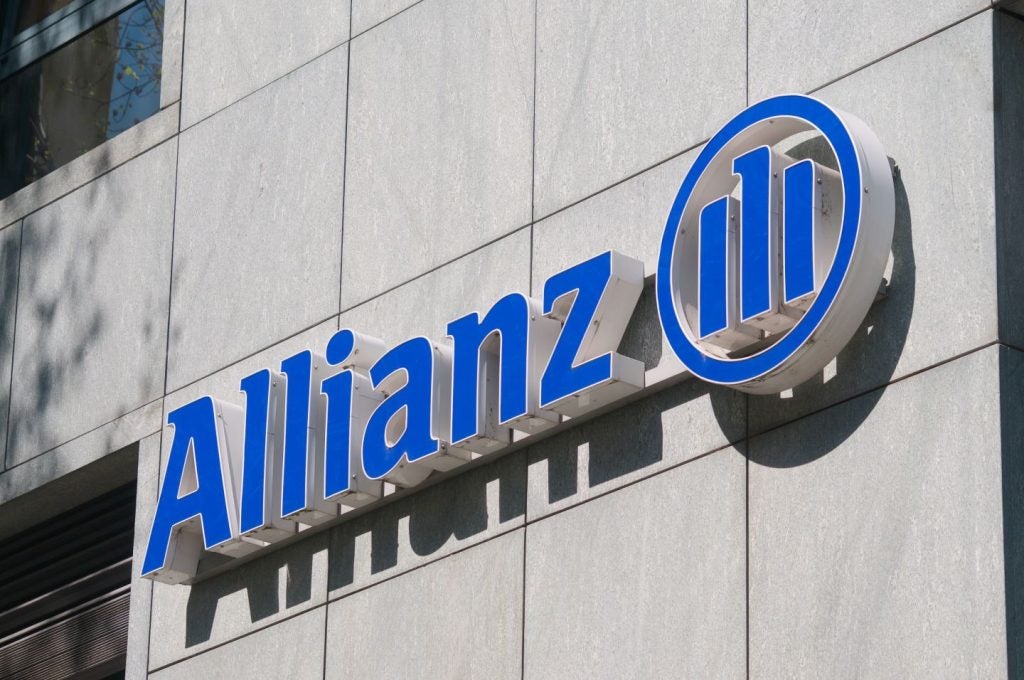Industry Attractiveness
The Romanian insurance industry is robust, aligning itself with European practices and structure. It performed positively during 1998-2008. However, its performance was weakened by the global economic slowdown and the EU debt crisis. The closure of businesses, such as Nokia in 2012 and Lactalis Group in 2013, also affected the segment’s growth and increased the unemployment rate. A decrease in bank lending values, in US dollar terms, at a CAGR of 56.7% added to challenges faced by the insurance industry. Consequently, the industry’s gross written premium decreased from RON8.9 billion (US$3.5 billion) in 2008 to RON8.3 billion (US$2.7 billion) in 2012, representative of a CAGR of -2.0%.
In terms of gross written premium, the Romanian insurance industry remains underdeveloped when compared to other Western European countries such as the UK, France, Germany and Italy. Low penetration rates reflect potential opportunities for global insurers. The country employs liberal policies related to private participation. The industry is predominantly composed of multinationals; six of the 10 leading firms are foreign, and accounted for 74.1% of the industry’s gross written premium in 2010. Economic and business conditions in EU member states, including Romania, are gradually improving. This is expected to encourage new employment opportunities, which will support industry growth. The industry’s written premium is expected to post a CAGR of 6.3%.
Romania’s non-life segment accounted for 74.2% of the industry’s written premium in 2012. Motor insurance accounted for the largest share with 66.3%, followed by the property insurance category with 24.9%. Motor insurance registered a decline in written premium during 2010-2012 due to a slowdown in bank lending and weakened demand for new cars. Romanian passenger car sales volume decreased from 130,195 units in 2009 to 94,619 units in 2011. This adversely affected the motor insurance category and led to it posting a CAGR of -15.8% during 2009-2011. As a result, the written premium of the non-life segment fell from RON6.9 billion (US$2.8 billion) in 2008 to RON6.1 billion (US$1.8 billion) in 2012, at a CAGR of 3.0%.
In terms of the life segment, individual life insurance was the largest and most dominant category, accounting for 99.8% of the gross written premium in 2012. An unemployment rate of 5.8% was recorded between 2008 and 2012 and the gross written premium registered by unit-linked products declined due to stock market volatility and a reduction in investments. The market capitalization of the Bucharest Stock Exchange fell from US$19.9 billion (RON7.9 billion) in 2008 to US$15.9 billion (RON4.6 billion) in 2012.
The personal accident and health segment is comparatively small in written premium terms when compared to the life and non-life segments. It accounted for only 4.2% of the industry’s gross written premium in 2012. However, the segment grew at a CAGR of 23.9% in that time. This was primarily due to a rise in the population above the age of 65 years from 3.25 million in 2008 to 3.26 million in 2012. The increase in life expectancy from 72 to 74 years, and per capita healthcare expenditure from RON1,268.11 (US$503.4) in 2008 to RON1,424.96 (US$467.4) in 2011 were the key growth drivers. This segment also provides ample growth opportunities for global investors as less than 10% of the population was covered by private health insurance in 2012.
The industry is projected to post a CAGR of 6.3%, to reach a value of RON11.2 billion (US$3.5 billion) in 2017. This growth is expected to be driven by economic improvements, an aging population, stability in the property market, and an expanding automobile industry.
Segment Outlook
Life insurance is the second-largest segment in the country’s insurance industry, accounting for 21% of gross written premium in 2012. The gross written premium registered by the segment decreased from RON1.8 billion (US$729.9 million) in 2008 to RON1.7 billion (US$500.7 billion) in 2012, at a CAGR of 1.4%, but is expected to reach RON2.1 billion (US$655.4 million) by 2017.
The main reason for the decline in gross written premium is the global financial crisis in 2008, which adversely impacted the Romanian economy, producing high unemployment rates, a high budget deficit, and a fall in demand. The country’s GDP declined by 6.6% in 2009 and 0.9% in 2010. The Romanian government implemented austerity measures such as a reduction in government employee salaries and social security benefits in 2010.
This further affected the purchasing power of Romanians and their ability and willingness to purchase investment products such as life insurance. The Romanian economy started to recover in 2011, primarily driven by a considerable increase in agricultural production. The country’s GDP is expected to increase at a CAGR of 2.6% up to 2017. This is expected to result in a gradual rise in the demand for life insurance products.
Life insurance premium payments are not allowed to be included as deductions for taxation. Life insurers have requested that the government include provisions for life insurance premium payments to be tax-deductible. If passed, this provision is expected to result in a considerable increase in demand for life insurance products.
Life insurers in Romania benefited from low combined ratios, resulting in underwriting profits between 2008 and 2012. The combined ratio in the life insurance segment stood at 58.6% in 2012, and is expected to be 59.7% in 2017, indicating that life insurers in Romania will remain profitable. An increase in the per capita gross national disposable income as well as the total urban population are key factors that will lead to an increase in the value of gross written premiums registered by the life segment. The per capita gross national disposable income increased from RON25,194.1 (US$7,927.9) in 2010 to RON28,332.0 (US$8,179.4) in 2012. The country’s urban population increased from 12.4 million in 2008 to 12.8 million in 2012.
Prior to April 2013, the country’s insurance industry was supervised by the Insurance Supervisory Commission. In April 2013, in fulfillment of an earlier pledge made to the International Monetary Fund (IMF), the Romanian government merged the supervisory authorities for insurance, capital markets and private pension markets to create a single regulator, the ASF. Its creation is expected to lead to improved co-ordination between the various non-banking financial sectors through reduced bureaucracy and superior centralization. A single regulator is also expected to better predict and manage the types of systemic risk seen during the 2008 financial crisis. In addition, a single regulator is better suited to the Romanian environment where the insurance and the financial investment markets are too small to necessitate specialized regulators.
Insurers contemplating an entry into the Romanian insurance industry should be aware that there is a paucity of actuarial resources, and expanding businesses profitably is a challenging process. In November 2013, Axa Group announced that it was exiting the Romanian insurance industry by selling Axa Life Insurance SA to Astra Asigur?ri, subject to permission from the regulator. Axa was finding it difficult to grow in Romania without compromising profitability. Also, the long-term potential of the life segment is constrained by the falling population, which fell from 22.1 million in 2008 to 21.8 million in 2012, largely as a result of emigration and a low birth rate.
As of 2012, there were 19 companies operating in the Romanian life segment. The segment is concentrated, with the 10 leading insurers accounting for 92.8% of the segment in 2012. ING Asigur?ri de Via?? SA was the segment leader, with a 31.3% share in 2012. It was followed by BCR Asigur?ri de Via?? Vienna Insurance Group with a 23.7% share.
Distribution Channels
The distribution network for life segment products in Romania primarily comprises brokers, agencies, bancassurance and direct marketing.
Brokers were the main distribution channel for life segment policies in Romania between 2008 and 2012. Brokers accounted for 47.9% of the total commission paid to the distribution channels in 2012. The leading five brokers in 2013 were, in descending order, Marsh, Safety, Porsche, Destine and UniCredit. The value of gross written premium from new business collected through brokers decreased from RON221.6 million (US$88 million) in 2008 to RON219.2 million (US$63.3 million) in 2012, at a CAGR of 0.3%.
This value is projected to reach RON252.3 million (US$78.8 million) by 2017. The share of brokers, in terms of gross written premium from new business, is expected to decline from 47.9% in 2012 to 47.4% in 2017. The number of new policies sold by brokers decreased from 114,877 in 2008 to 98,148 in 2012 due to reduced demand for life insurance following the 2008 financial crisis. The number of new policies sold by brokers is expected to reach 107,455 in 2017, in line with the growth in the economy.
Agencies followed brokers in terms of gross written premium from new business registered by the life segment in 2012. Agencies accounted for 22.8% of the total commission paid to the distribution channels in 2012. The value of gross written premium from new business collected through the channel increased from RON98.9 million (US$39.3 million) in 2008 to RON104.3 million (US$30.1 million) in 2012, at a CAGR of 1.3%. Agencies accounted for 22.8% of the gross written premium from new business in 2012. This is expected to reach 23.1% in 2017, accounting for RON122.7 million (US$38.4 million) in gross written premium from new business in the same year. The number of new policies sold through agencies decreased from 51,253 in 2008 to 46,700 in 2012. The reduction in the number of new policies sold is due to fall in demand for insurance products in the country. The number is expected to increase to 52,839 by 2017 due to the expansion of the Romanian economy.
In several EU member states, the bancassurance channel plays a significant role in the distribution of life insurance products, although in the Romanian life segment, only 18.4% of gross written premium from new business was generated through the channel in 2012. The value of gross written premium from new business collected through the channel decreased from RON84.8 million (US$33.7 million) in 2008 to RON84.1 million (US$24.3 million) in 2012, at a CAGR of -0.2%. This is expected to reach RON98 million (US$30.6 million) by 2017. The number of new policies sold through bancassurance decreased from 43,948 in 2008 to 37,669 in 2012. However, with improving economic conditions, the number of new policies sold through bancassurance is expected to go up to 42,843 in 2017, registering a CAGR of 2.6%.
Direct marketing in the Romanian life segment comprises channels such as company employees and call centers. Direct marketing accounted for 10.6% of the total commission paid to the distribution channels in 2012. The value of gross written premium from new business collected through direct marketing increased from RON48.2 million (US$19.1 million) in 2008 to RON48.5 million (US$14.0 million) in 2012, at a CAGR of 0.2%. This is expected to go up to RON57.9 million (US$18.1 million) by 2017. Direct marketing’s share of gross written premium from new business is expected to increase from 10.6% in 2012 to 10.9% by 2017.
The gross written premium from new business collected through e-commerce increased from RON32,310.1 (US$12,827.3) in 2008 to RON37,035.8 (US$10,692.2) in 2012. E-commerce is expected to increase at a CAGR of 3.5% up to 2017. The other distribution channels also experienced an increasing trend as the gross written premium from new business collected through these channels increased from RON1.1 million (US$0.4 million) in 2008 to RON1.2 million (US$0.3 million) in 2012, at a CAGR of 0.9%.
How well do you really know your competitors?
Access the most comprehensive Company Profiles on the market, powered by GlobalData. Save hours of research. Gain competitive edge.

Thank you!
Your download email will arrive shortly
Not ready to buy yet? Download a free sample
We are confident about the unique quality of our Company Profiles. However, we want you to make the most beneficial decision for your business, so we offer a free sample that you can download by submitting the below form
By GlobalData





